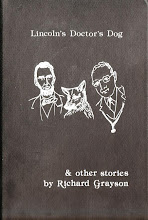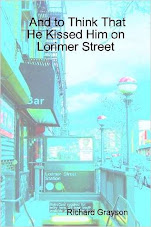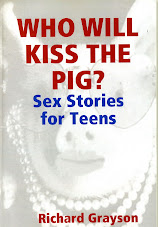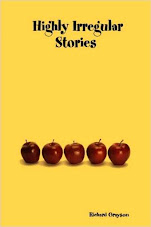Saturday, August 31, 2013
Saturday Afternoon in Red Hook: ISSUE Project Room presents "10 YEAR Opening" with Omar Souleyman, Bobb Trimble's Flying Spiders, 75 Dollar Bill and Steve Gunn at Pioneer Works
Friday, August 30, 2013
Thursday, August 29, 2013
Thursday Night on the Lower East Side: SummerStage presents Larry Harlow and The Latin Legends Band with DJ set by DJ Lucho at East River Park
(Video courtesy Larry Velez)
(Video courtesy QVLM)
(Video courtesy Vico El Conde)
(Video courtesy Ken Bravo)
(Videos courtesy Luisito Rosario)
Wednesday, August 28, 2013
Wednesday Evening in Center City: Philadelphia City Hall presents Kurt Vile Day at City Hall Courtyard
(Video courtesy Bob Sweeney)
(Video courtesy Jacqui West)
(Videos courtesy pilgrimsprogress)
(Video courtesy PhillyRocky)
Tuesday, August 27, 2013
Tuesday Night on the Lower East Side: SummerStage presents Pete Rock vs. DJ Premier hosted by Lyricist Lounge at East River Park
(Video courtesy Gandi Ganda)
(Video courtesy Sidney Corniff)
(Video courtesy titoarembi)
(Video courtesy Amora Corvo)
(Video courtesy Sidney Corniff)
(Videos courtesy TJ Davis)
Monday, August 26, 2013
Sunday, August 25, 2013
Sunday in Fort Greene: The Ninth Annual AfroPunk Fest at Commodore Barry Park
(Videos courtesy ronque23)
(Video courtesy AzuAlways)
(Videos courtesy MikeQ)
(Video courtesy Todd Sokolove)
(Video courtesy tashmosh)
(Video courtesy djBTips)
(Video courtesy onedrunkboy)
(Video courtesy Ron Mac Donald)
(Video courtesy Michael MacIvor)
(Video courtesy RevolutionOfThought1)
(Video courtesy Ron Mac Donald)
(Video courtesy Fetti G)
(Video courtesy DEATHWorldWide)
(Videos courtesy briphy)
(Videos courtesy Picha Dis)
(Video courtesy ilovejendog)
Saturday, August 24, 2013
Saturday in Fort Greene: The Ninth Annual AfroPunk Fest in Commodore Barry Park
(Video courtesy WhoIsMartymar)
This weekend, the ninth annual Afropunk Festival again took over Commodore Barry Park in Brooklyn to showcase dozens of artists of color, spread across genres from thrash hardcore to ultra-current hip-hop, from New Orleans bounce to good time soul review. As always, from entry to exit, it's about the best-run festival the city has to offer: pleasant, on-time, easy to move around within. You can easily catch at least a portion of every artists' set, while still having time to grab a bite or a beer, participate in some sort of extreme sport, or just people-watch at one of the most vibrant fashion weekends of the year. . . A big music event in Brooklyn where no one played a cheesy hits medley! Where the performances didn't leave you feeling kind of gross and sad and too old to be witnessing them! Imagine...
(Videos courtesy LarryRulz) (Videos courtesy Zerina Phillip) (Video courtesy pristafari) (Video courtesy WhipNYC) (Video courtesy Tracey Brickhouse) (Video courtesy Foundtrack) (Video courtesy Preppy Ken Ken) (Video courtesy Ava Fedorov) (Video courtesy PrimeminiBeats) (Video courtesy diffstrokes24) (Video courtesy Ty Rock) (Video courtesy djBTips) (Video courtesy Zerina Phillip) (Video courtesy djBTips)- Jeff Klingman at The L Magazine
Friday, August 23, 2013
Thursday, August 22, 2013
Wednesday, August 21, 2013
Wednesday Evening in Central Park: The Chamber Music Society of Lincoln Center at the Naumburg Bandshell
(Video courtesy The Guide to the World)
(Video courtesy The Guide to the World)
Tuesday, August 20, 2013
Tuesday Night in Long Island City: Live at the Gantries presents Gerardo Contino y Los Habaneros at Gantry Plaza State Park
(Video courtesy Long Island City Queens TV)
Sunday, August 18, 2013
Saturday, August 17, 2013
Friday, August 16, 2013
Thursday, August 15, 2013
Thursday Afternoon in Lower Manhattan: Indo-American Arts Council In collaboration with Battery Dance Company's 32nd Annual Downtown Dance Festival presents Erasing Borders Festival of Indian Dance at Battery Park
(Video courtesy Rajika Puri)
Mayur Allaripu
Dancer: Rama Vaidyanathan
Choreography: Rama Vaidyanathan
Music: Rhythmic syllables composed by K Sivakumar
This is an unusual Alarippu, in that the choreography combines the Alarippu structure of the traditional Bharatanatyam repertory with the motif of a peacock. Instead of the usual flat palm hand position (Pataka Hasta) this bird with a colorful tail is shown using the peacock hand position (Mayura Hasta).
Mayur Allaripu
Dancer: Rama Vaidyanathan
Choreography: Rama Vaidyanathan
Music: Rhythmic syllables composed by K Sivakumar
This is an unusual Alarippu, in that the choreography combines the Alarippu structure of the traditional Bharatanatyam repertory with the motif of a peacock. Instead of the usual flat palm hand position (Pataka Hasta) this bird with a colorful tail is shown using the peacock hand position (Mayura Hasta).
Here is the New York Times review by the wonderful Alastair Macaulay:
Every year, the Downtown Dance Festival devotes one of its open-air lunchtime performances solely to Indian dance. This, organized by the Indo-American Arts Council as part of its Erasing Borders festival, serves as a rich sampler of the various Indian dance forms and has become one of the highlights of New York’s dance year.
Most years, it has taken place in one of the financial district’s plazas; I’ve loved the incongruity of skyscrapers and old dance, with office workers gazing from windows at the bright costumes and pulsating movement. On Thursday, the performance took place in the more idyllic setting of Battery Park, beneath the plane trees, stopping some tourists in their tracks. Siren sounds from the port and traffic noise punctuated the taped music; nothing broke the spell. As Rajika Puri observed in her enlightening introductory remarks, Thursday was also Indian Independence Day, the anniversary of the creation of the Republic of India in 1947. There follows, this week and next, a whole series of workshops and performances in Indian dance and music.
The two-hour concert on Thursday featured five of the classical dance forms of India and one of its many folk forms. Several of the performers were visiting from India; one of the most remarkable, the Bharatanatyam dancer Rama Vaidyanathan, had just arrived from Delhi that morning, negotiating the intense visa problems that afflict so many visitors from India. She and the Odissi dancer Rahul Acharya were the most exceptional solo performers of the afternoon, but other revelations occurred in the examples of the classical dance forms Mohiniyattam and Kathak.
The lessons of Indian dance go far beyond the specifics of any one genre. I wanted most of New York’s ballet and modern dancers, teachers and choreographers present among Thursday’s audience to absorb what Indian dance can offer in terms of rhythm, footwork, phrasing and — most obviously — eyes and hands. Something yet more moving and less explicable than those details is the way Indian dancers address elements larger than themselves in their performances. Watching, you witness images of self-effacement: the dancer opens his or her eyes, arms and, apparently, soul to aspects of the divine. Though this is related to transcendence, it involves an extraordinary modesty and objectivity.
I felt this most acutely during the Kathak dancer Rani Khanam’s solo “Nritta and Abhinaya.” The Kathak idiom features rapid virtuosity of percussive footwork and various kinds of fast turns, but it also makes multiple uses of focus. Often the dance connects the music, the audience and the performer in quick series, but there were also glorious moments on Thursday when Ms. Khanam suddenly turned face, arms and hands to the sky as if to acknowledge and to receive.
As soon as Ms. Vaidyanathan began, she compellingly showed two opposite forces: communicative charm, in which eyes and every part of the body speak, and decisive, uncompromising stillness. Her opening dance — “Mayur Alarippu,” evoking the peacock — abounded in arresting details of style: tiny shudders, little trills of the feet and richly volumetric use of arm gestures to open up the surrounding space.
Her next solo — “Raas Lila,” about the myth of the god Krishna and the cow girls (gopis) — featured the single most astounding moment of the program: a long, sculptural demi-plié (stance with parted knees bent) in which she continued to descend with exceptional slowness and control while holding the same upper-body position. Her head remained turned to one side, her eyes lowered. It was as if the enraptured cow girl were gradually melting in contemplation of the boy god and his beauty.
A yet greater wealth of stylistic details shone in “Chakravaha Pallavi,” danced by Mr. Acharya. Usually we see the Odissi style (from the eastern Indian state of Orissa or Odisha) performed by women, but its tradition of male performers (from boyhood on) is long. Mr. Acharya’s refined sculptural firmness, complex gestural eloquence, subtle musical phrasing and articulate grace are enough to extend most ideas of masculinity.
Bare-chested, with silver armlets and belt above blue leggings, with unusual lines of makeup on forehead and upper lip, he connects virility to virtuoso delicacy. Fingers are frequently individualized. The coordination of separate body parts is exquisite — notably in tautly rhythmic phrases when he elaborately extends right hand and right foot in different ways, then does the same with left hand and left foot. And he, too, has stillness and repose. Just standing on one foot, he keeps one arm upheld in a perfect arc, and looks upward from under its frame into the distance: a wonderful image.
No Indian dance form involves more swaying or curves than the Mohiniyattam genre of the southwestern state of Kerala. In the “Mayil Kuthu” solo on Thursday, Vijayalakshmi showed the soft tipping of the torso from side to side, the large arc softly traced by a foot on the floor, and the gentle shake of shoulders. It’s a sweetly sensuous style, but not without firm features. Though the fingers quiver, the diagonal line they trace through the air at one point is steady. Feet are often planted far apart, with knees bent, to support the pliantly waving torso in the air; a superb moment occurred as the knees slowly straightened, as if gradually but powerfully propelling the still tilted torso up into the air.
Three female dancers of Gurukul Dance Academy from Kansas performed one item in the Kuchipudi style (from southeast India) and a folk dance from Rajasthan. These were lively and easily enjoyable but did not feel authentic. The program ended with a duet by Ms. Vaidyanathan and Ms. Khanam, eloquently showing how aspects of Kathak and Bharatanatyam, sharing space and time, can conduct a dialogue.
Rama Vaidyanathan will perform at First Floor Theater at La MaMa on Monday, 74A East Fourth Street, East Village, navatman.org/driveeast.
Wednesday, August 14, 2013
Wednesday Night in Williamsburg: SummerScreen presents "The Neverending Story" with Market Hotel (Todd P + Showpaper) presenting music by Aa, Ratking, Amen Dunes and Chota Madre at McCarren Park
Labels:
11211,
Aa,
Amen Dunes,
Chota Madre,
Market Hotel,
McCarren Park,
Ratking,
Showpaper,
Summerscreen,
The Neverending Story,
Todd P,
Williamsburg
Subscribe to:
Comments (Atom)























































































